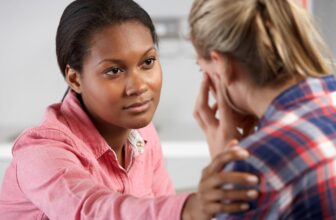
Adolescence is a phase marked by hormonal, physical, and behavioral changes. It is also a period of many questions, and one of them (if not the most crucial) is the changes that occur in the body itself, which often lead to anguish and comparisons with others.
What is body image distortion and how does it affect adolescents' body perception?
Dissatisfaction with body image occurs due to inaccurate communication between body and mind, according to the body experience that the person has had throughout life. In body image distortion, a person believes their body is a different size than it really is, which can lead them to pursue numerous aesthetic procedures, and possibly develop eating disorders, according to
Thus, this article aims to present the causes of body image distortion, how it is formed in adolescence, as well as forms of treatment.
What is body dysmorphic disorder?
Body dysmorphic disorder (BDD), or body dysmorphia, is a mental health condition where a person inaccurately views their body as flawed in some way. It can affect people of all ages and genders, but is most common among teens and young adults.
People with body dysmorphic disorder have a mental map of their body that is disconnected from their real appearance. This occurs because the image that reaches the cerebral cortex is distorted, causing the person to perceive themselves as a different size than they are. For instance, in individuals with anorexia and bulimia, neurological differences have been observed in their parietal cortex (the part of the brain that helps people sense the dimensions of their bodies), causing them to overestimate their body size because their brains are giving them inaccurate information.
What causes body image distortion?
Body image distortion results from negative beliefs and comments about one's own body that can start in childhood and reach signs of body dissatisfaction in adolescence, when young people constantly compare themselves with others.
In adolescence, both the cerebral cortex and the personal identity are still being formed. Thus, it is very common for young people to be more sensitive to influences about behaviors and what is considered an attractive body shape, especially among their peers. Critical events involving provocation and rejection can trigger an erroneous perception of body image in young people. Studies have found that the more often you are teased about your body size and weight during growth, the more likely you are to experience body image distortion and body dissatisfaction during adulthood.
The construction of body image involves perceptual components (how a person sees, feels, and perceives their body); cognitive aspects (how a person feels about their body), as well as behavioral aspects (how a person reacts and behaves about their body at events, parties, etc.). When these messages are positive, there is a sense of belonging and appropriateness. If the communication between the body and the brain is negative, body image distortion can occur.
Adolescence and Body Image Distortion
The development of body image in adolescence involves factors linked to puberty, as well as the first reference figures of the young person's life, such as parents and family members. However, as a teenager socializes and creates new relational ties with friends, they expand their repertoire in terms of perception, feelings, and thoughts toward their body. Thus, awareness of one's body image in adolescence has to do with how young people feel about themselves, how external factors such as family, friends, and culture influence their identity, and how they see their bodies. It is also important to point out that it is from the sensory and motor perception that adolescents become aware of the corresponding physical parts of their bodies.
Although we develop our body image from experiences, feelings, beliefs, and behaviors, it can change as we interact with the world. Thus, it is essential to pay attention to the type of information that adolescents receive and how they receive it. For example, the exaltation of thin bodies and the aesthetic standards of actresses and celebrities can be extremely harmful to the construction of the adolescent's body image and can lead to manifestations of dissatisfaction with their bodies.
In the age of social media, it has become very common for teenagers to use filters to achieve the “perfect appearance” and thus eliminate undesirable parts of their bodies. Unrealistic images of their peers' supposedly perfect bodies end up becoming an important trigger when teenagers look in the mirror and identify that their bodies are different. It is at this moment that the negative comparisons set in, which leads the teenager to develop a distorted image of body size and shape, as well as wanting to change their body.
What are the symptoms of body dysmorphia and body image distortion in teens?
Dr. Bianca Thurm, creator of the Bianca Thurm Method (MBT) ® that evaluates and treats Body Image Distortion, is a physiotherapist with a postdoctoral degree from the Faculty of Medicine of USP at the Institute of Psychiatry. According to Dr. Thurm, there are a few signs that your teen may be struggling with body image distortion:
- Complains that they are “fat” or “ugly”
- Points out parts of their body in photos or the mirror as being bigger than they are
- Demonstrates excessive concern about losing weight
- Wears loose clothes to hide their body
- Stops eating, or uses other unhealthy methods to lose weight
To assess a patient for body image distortion, professionals apply a perceptive assessment of body image, whose objective is to measure the difference between the size perceived by the patient and their actual size. These differences will identify the presence, as well as the degree of, body perception distortion.
Thurm also points out that starting treatment when the first signs appear is the best way to ensure successful treatment and lower the chances of dissatisfaction evolving into something more serious such as an eating disorder.
How is body image distortion treated?
Distortion of body image is related to the tendency of people to perceive their bodies as larger than they actually are. Thus, one of the treatment approaches is hoop training, in which patients learn to choose and move through a hoop that best fits their body size. This technique addresses multisensory body perception, including visual, tactile, and proprioceptive perceptions.
Another treatment that has been shown to benefit people with high body dissatisfaction is Mirror Therapy, which involves examining where people direct their gaze during mirror exposures. The client is instructed to describe their reflection using non-judgmental language, typically starting with the head and progressing to the toes, followed by a full body description while a therapist is present, using a cognitive restructuring approach.
As you can see, body image distortion is a real problem that generates dissatisfaction and discomfort in the lives of far too many young people. Only those who are struggling with image distortion are capable of expressing in words, sensations, and feelings what they are feeling and how they are anguished. However, treatment exists, and it is possible with a team specializing in body image distortion.
Daniela Silva is a Brazilian educational writer living with her husband in Goiânia (GO), Brazil. She holds a BA in Pedagogy; an MBA in Personnel Management and a postgraduate certificate in Neuroeducation. Working as an educational writer since 2012, Ms. Silva is a regular contributor to several educational websites, such as 4W, Inspire the Mind, Psychreg, The Old Schoolhouse Magazine, New Heights Educational Group, and Texas HomeSchool Coalition.
Dr. Wilson graduated from Rosalind Franklin University of Medicine and Science and completed her residency in Internal Medicine at Advocate Good Shepherd Hospital in Barrington, IL. Dr. Wilson specializes in providing culturally competent and trauma-informed care to patients with physical disabilities. In addition to her private practice, she works as a science communicator, teaching health literacy to middle school and high school students in her local school district.








